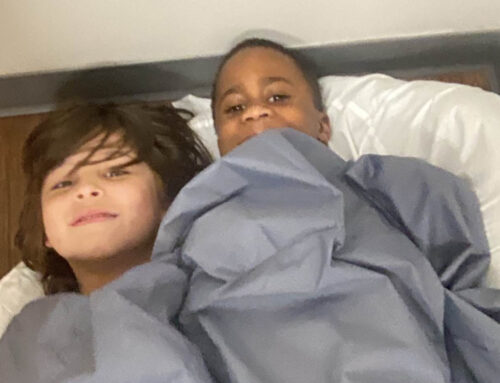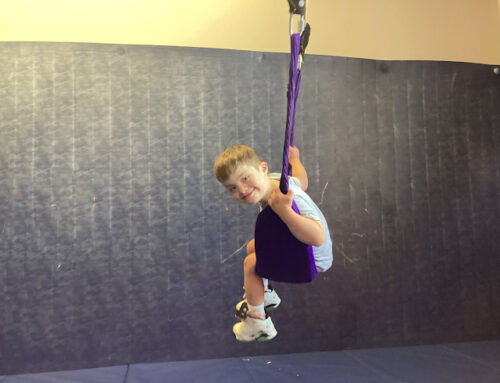We got boogies…help! The cold weather means lots of opportunities for snow angels, sledding, warm crackling fires, and hot cocoa! Unfortunately, it also means lots of opportunities for sniffly noses. Whether caused by being in the cold weather or from sickness, your child will most likely need to blow their nose during this season. Now comes the tricky task of teaching how to blow your nose.
Here are some tips to help teach your child how to blow their nose:
- Practice this skill even when your child isn’t sick! It can be easier to learn this skill if your child is feeling well. This will make it easier to use the skill when your child actually is sick.
- Build body awareness of the body parts used in blowing your nose.
- Before your child can be successful in independently blowing their nose, they must be able to independently locate their nose. Use the “Head, Shoulders, Knees, and Toes” song to promote this body awareness!
- Play “Where is the Sticker?” game, adapted from Schwartz & Rogers (2017), as published by the American Occupational Therapy Association. Tell your child to “put a sticker on your nose” to build body awareness surrounding their nose.
- Variations:
- Model how to do this by putting a sticker on your nose or using hand-over-hand to help your child put a sticker on your nose.
- Use a mirror to increase engagement and to help your child put the sticker on the correct part of their body.
- Change the body part to mouth, hand, etc.
- Practice the action of wiping a nose on your child’s toys.
- Example – smear shaving cream on Mr. Potato Head’s nose and tell your child to “wipe Mr. Potato Head’s nose” using a tissue.
- Note: you can practice the skill of wiping using various materials (tissue, paper towel, washcloth) and on various toys’ body parts (nose, mouth, hands) to generalize this skill.
- Use a mirror.
- Children are curious and often love to see their reflections. Using a mirror can help motivate your child to practice blowing their nose! Increase your child’s ability to mimic your actions by practicing blowing your nose in the mirror with your child.
- Practice blowing air out of the mouth, then out of the nose.
- Once your child has mastered blowing air out of their mouth, ask them to close their mouth so they can feel the sensation of air leaving their nose.
- Practice blowing bubbles in water (bath time would be a great time to do this!) using their mouth first, then using their nose.
- Use visual cues!
- Have your child try fogging up a mirror by only blowing air out of their nose. Practice using just one nostril by pinching the other closed and then switch.
- Blow something light like a feather or tissue paper. Your child will be excited and feel proud when they can blow the object away using only their nose!
References:
Schwartz, A., & Rogers, J. (2017). Supporting play between children and their parents with physical disabilities. OT Practice, 22(9), 20–22. Retrieved from https://www.aota.org/publications-news/otp/archive/2017/05-22-17-creativity-disability/supporting-play-between-children-parents-physical-disabilities.aspx

Blue Bird Day—the first therapeutic preschool and kindergarten program in the nation—fosters socialization, sensory regulation, and pre-academic learning in children ages 2-7 years. Our compassionate therapists practice a relationship-based and family-centered approach, provide parent training, and collaborate on goals and individualized intensive treatment plans for your child.
We believe in a collaborative and multi-disciplinary team approach to therapy. A team of occupational therapists, speech-language pathologists, dietitians, developmental therapists, behavioral therapists, physical therapists, and therapeutic assistants are created for each child to ensure child and family are fully supported and the best possible results are achieved.
Options for individualized, group and virtual therapy sessions are available as well.
Want to learn more or you have a specific question? Feel free to connect with us here!



